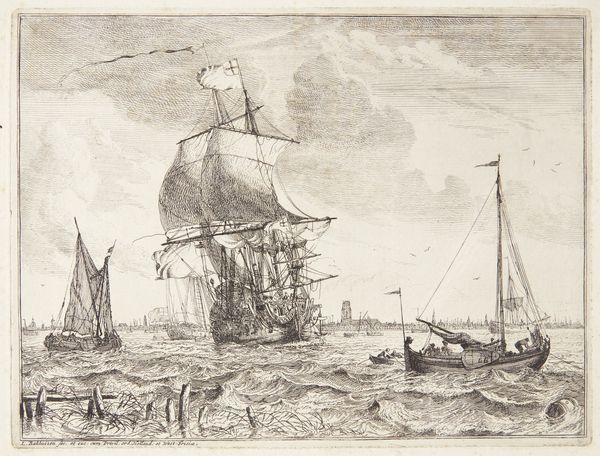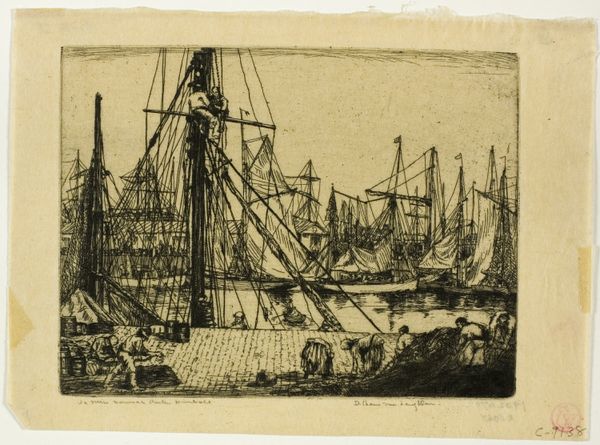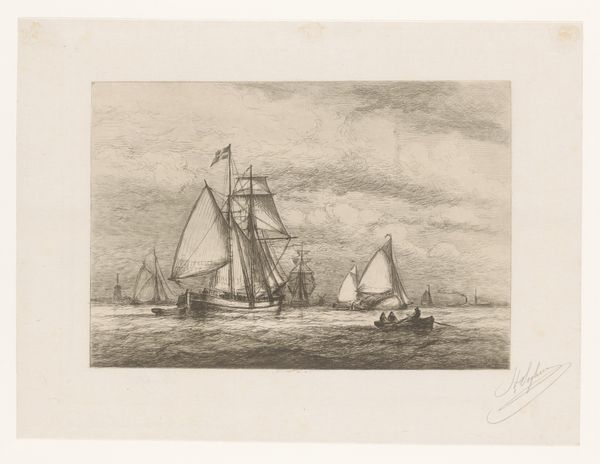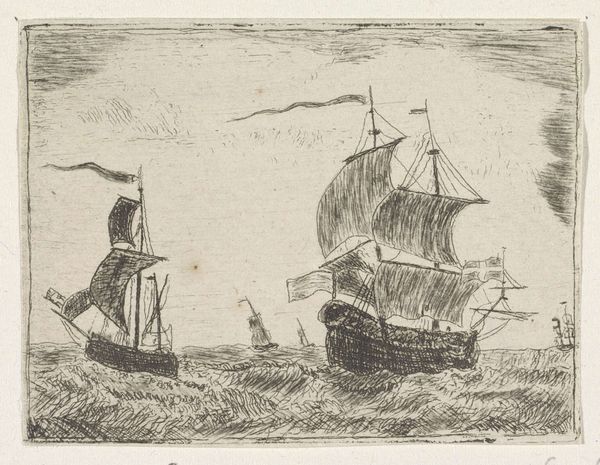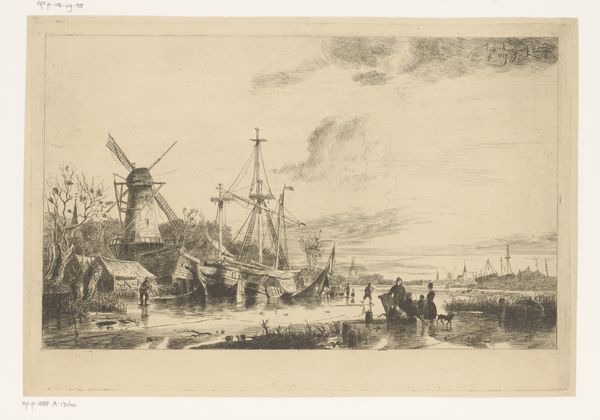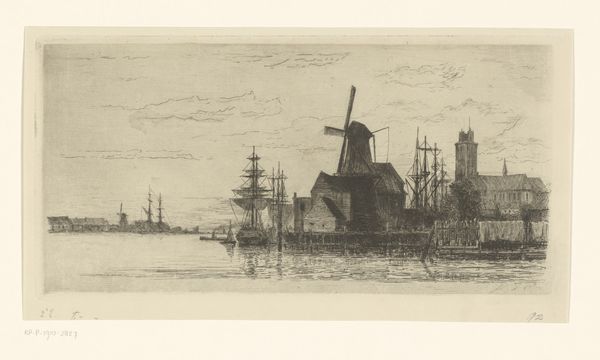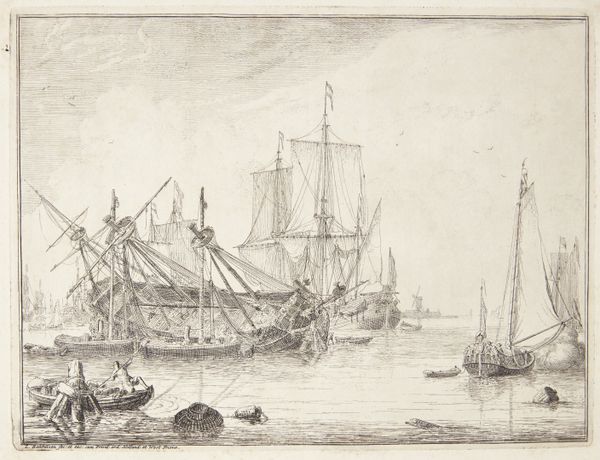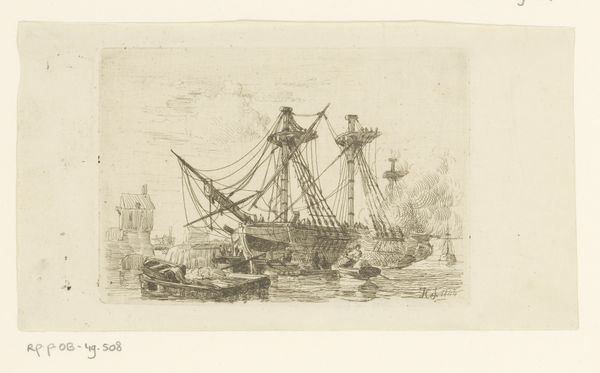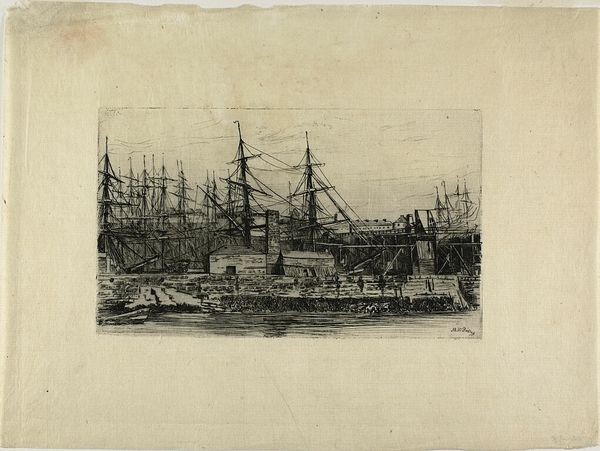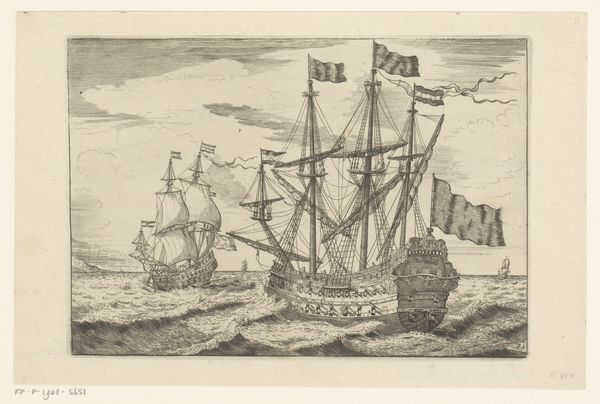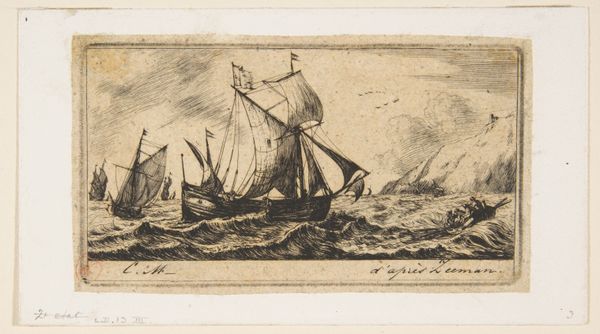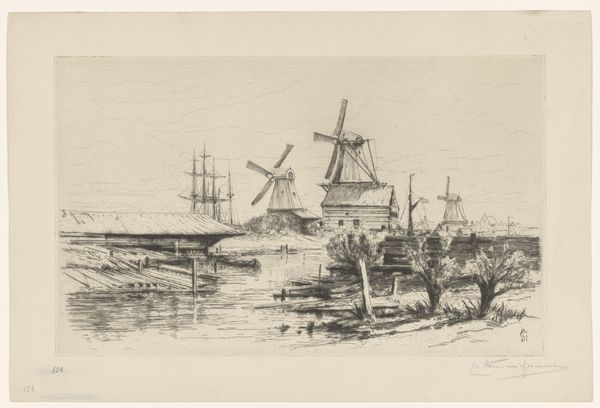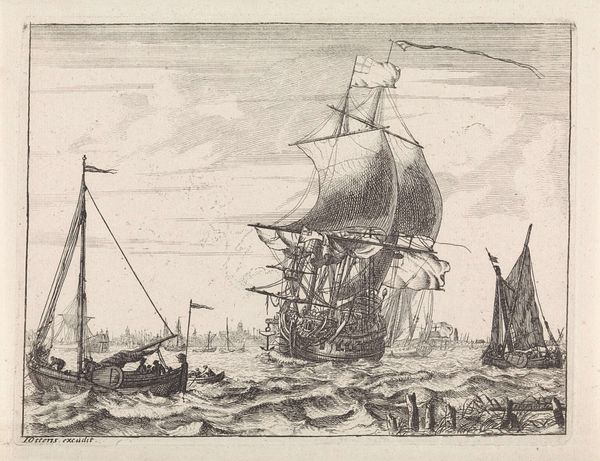
Dimensions: support: 59 x 78 mm
Copyright: CC-BY-NC-ND 4.0 DEED, Photo: Tate
Curator: This tiny sketch, titled "Shipping in an Estuary," is by Clarkson Stanfield. It's a glimpse into the bustling maritime world of 19th-century Britain, rendered in graphite on paper. Editor: There's an immediate sense of labor here—the figure pulling what seems to be a handcart really catches my eye. The ships are grand but the everyday toil on the docks is foregrounded. Curator: Absolutely, and consider the socio-economic context. Maritime trade fueled the Industrial Revolution, with figures like these working to support that expansion. It's about power dynamics and societal reliance on the working class. Editor: And look at the way Stanfield uses the graphite; it's all about efficiency and production—almost like a technical drawing. The marks show the speed and the volume of commerce, as if the labor mirrors the artistic creation. Curator: A valid connection to the artist's own labor. The act of drawing itself becomes a commentary on the social structures. Stanfield, though celebrated, was also participating in and depicting this system. Editor: I find it compelling how the raw materiality speaks of process and production—both in the scene and in the making of the artwork. Curator: Indeed, it's a lens through which we can examine the broader narratives of labor and industry. Editor: It's a small sketch, but the implications are vast.
Comments
tate 6 months ago
⋮
http://www.tate.org.uk/art/artworks/stanfield-shipping-in-an-estuary-t09328
Join the conversation
Join millions of artists and users on Artera today and experience the ultimate creative platform.
tate 6 months ago
⋮
This carefully drawn image with extremely fine line work was probably done with a fabricated chalk, perhaps containing a waxy substance. This is suggested by the slight sheen on the surface of the media and the way the line work has been built up in the denser areas without smudging. Gallery label, August 2004
